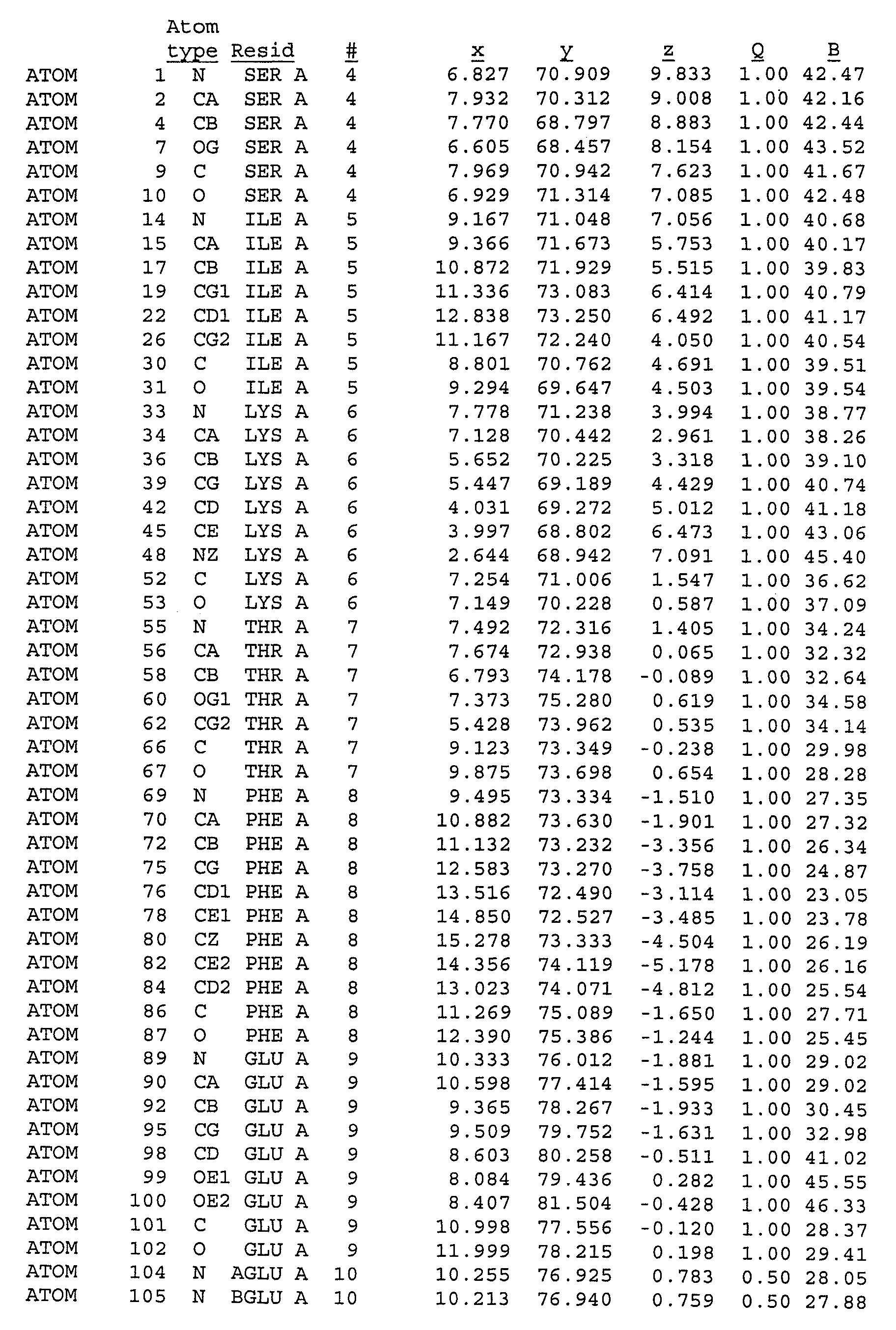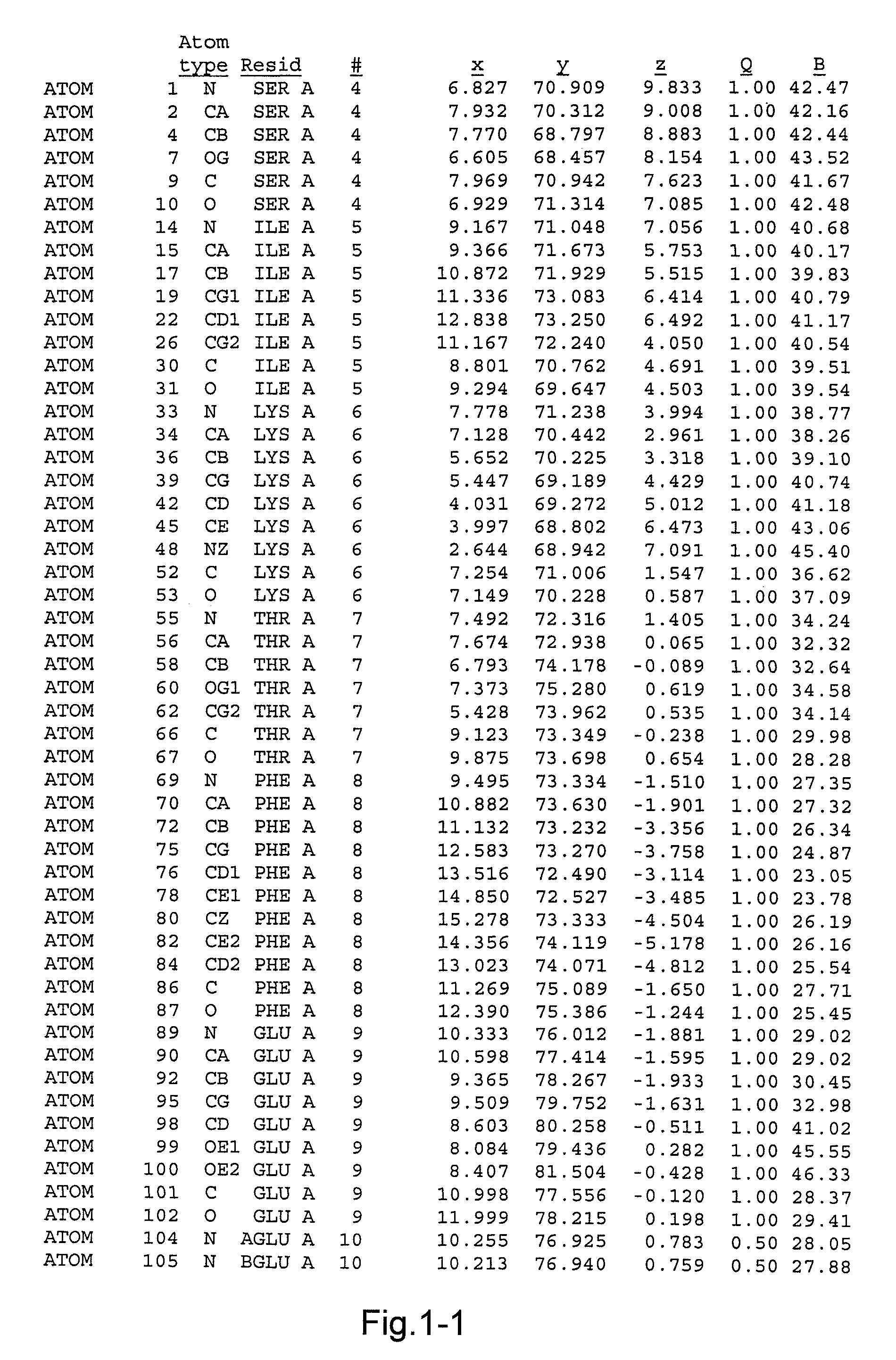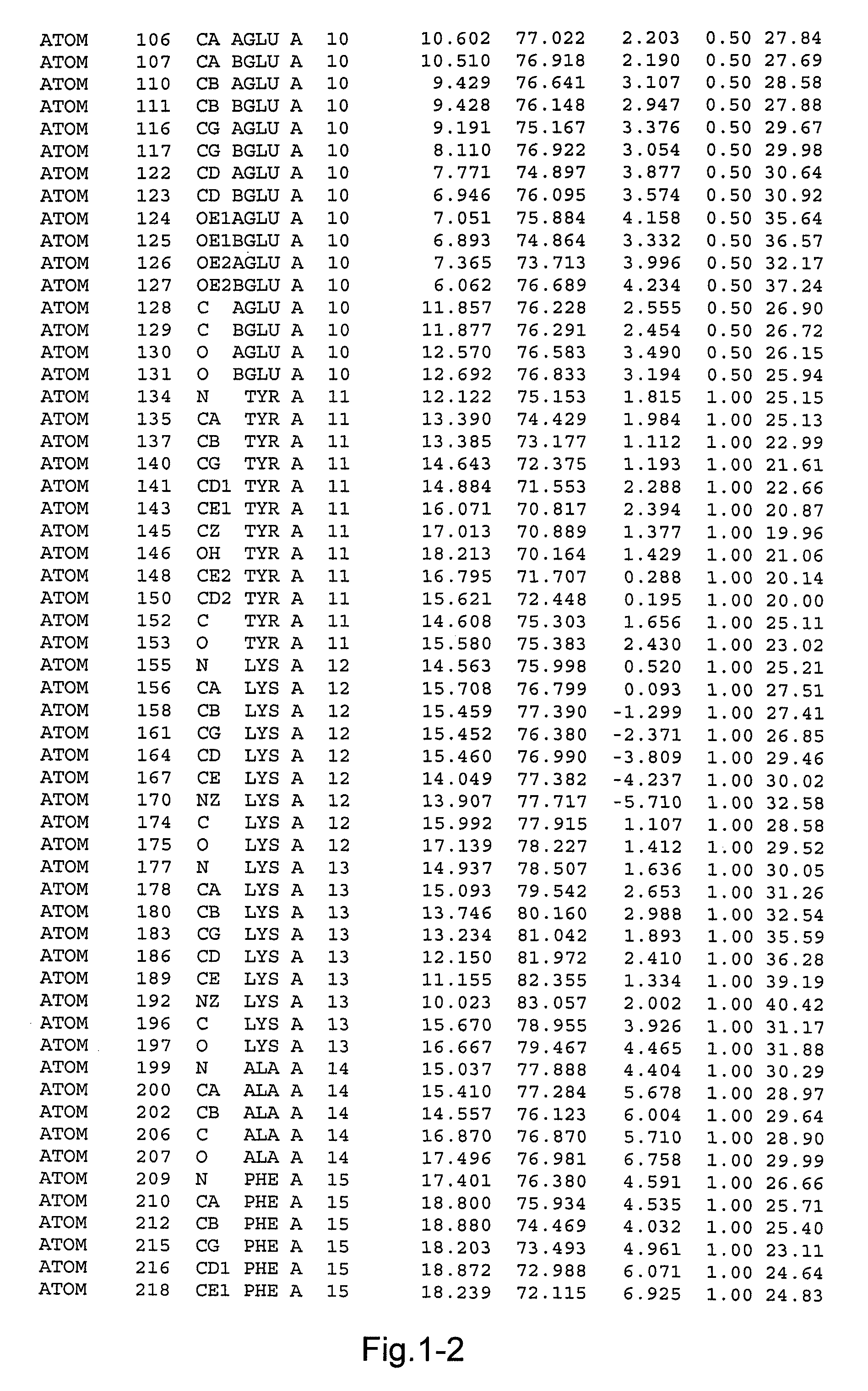Crystal structure of house dust mite allergen Der p 1
a technology of house dust mite and crystal structure, which is applied in the direction of molecular structure, antibody medical ingredients, instruments, etc., to achieve the effect of facilitating single crystallisation and reducing protein concentration
- Summary
- Abstract
- Description
- Claims
- Application Information
AI Technical Summary
Benefits of technology
Problems solved by technology
Method used
Image
Examples
example 1
Crystallization of rproDer p 1 Mutant 01611
[0079]A mutant of rproDer p 1 was obtained using recombinant techniques. The mutant had the following mutations: C114A and N132D. The mutant was called 01611. As explained above the mutation C114A was introduced to reduce or eliminate the proteolytic capacity of proDer p 1, and the mutation N132D was introduced so as to obtain a non-glycosylated protein. Previous experimental studies had shown that such mutations were necessary to obtain crystallisation of proDer p 1. The sequence of the mutant crystallised consisted of the sequence shown in FIG. 1 comprising a propeptide sequence consisting of amino acids 1-80, a sequence corresponding to the mature form of Der p 1 consisting of amino acids 81-302, and a linker sequence consisting of amino acids 303-306, and a His tag consisting of 6 His residues. The linker and His tag do not have any impact on the structure of the molecule.
[0080]rproDer p 1 01611 crystals were grown by the vapour diffusi...
PUM
| Property | Measurement | Unit |
|---|---|---|
| unit cell dimensions | aaaaa | aaaaa |
| structure | aaaaa | aaaaa |
| three-dimensional structure | aaaaa | aaaaa |
Abstract
Description
Claims
Application Information
 Login to View More
Login to View More - R&D
- Intellectual Property
- Life Sciences
- Materials
- Tech Scout
- Unparalleled Data Quality
- Higher Quality Content
- 60% Fewer Hallucinations
Browse by: Latest US Patents, China's latest patents, Technical Efficacy Thesaurus, Application Domain, Technology Topic, Popular Technical Reports.
© 2025 PatSnap. All rights reserved.Legal|Privacy policy|Modern Slavery Act Transparency Statement|Sitemap|About US| Contact US: help@patsnap.com



